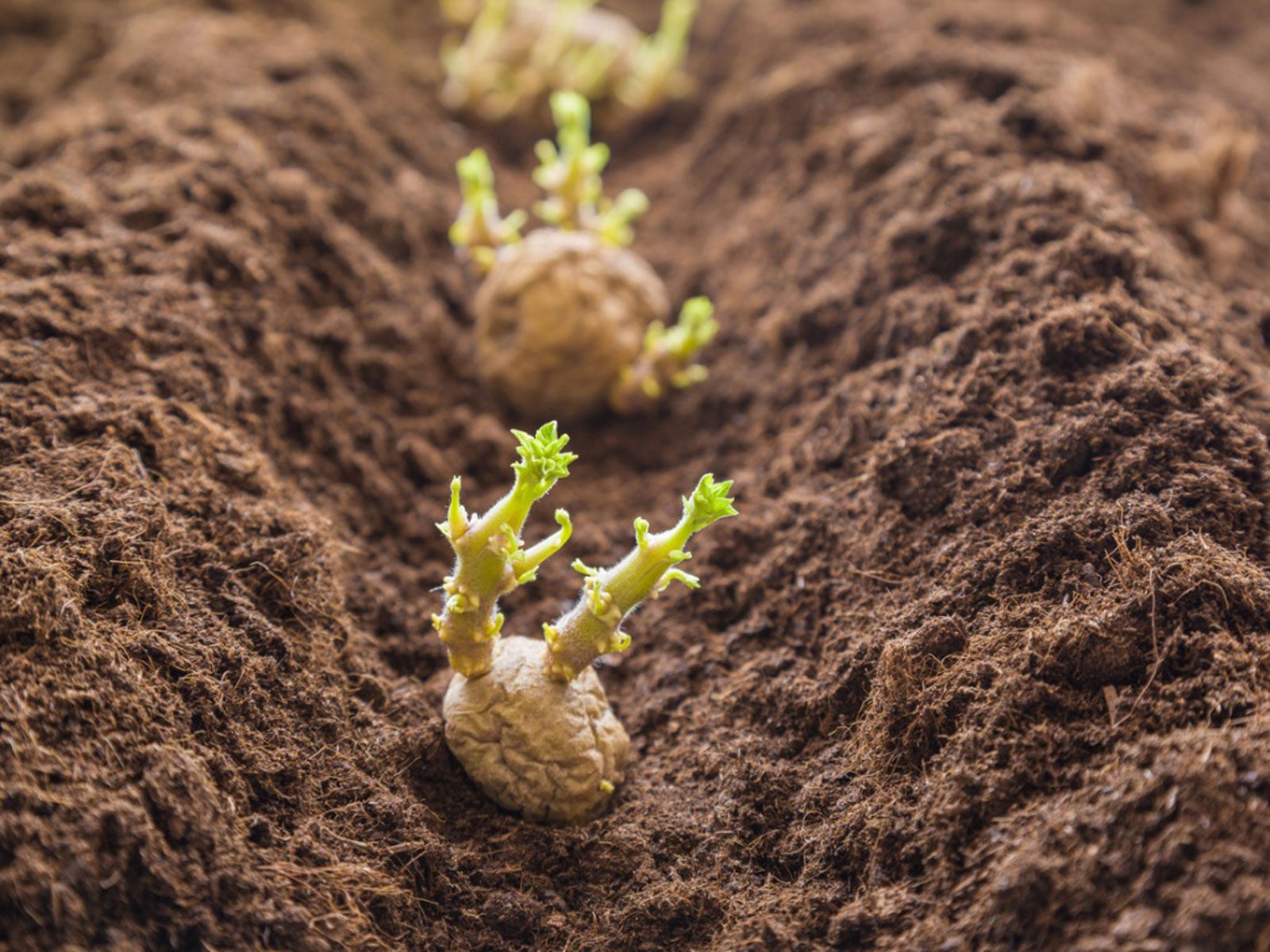Planting Potatoes: Learn How Deep To Plant Potatoes

Let's talk potatoes. Whether French fried, boiled, or turned into potato salad, or baked and slathered with butter and sour cream, potatoes are one of the most popular, versatile and easy-to-grow vegetables. Though many people are familiar with when to plant potato crops, others may question how deep to plant potatoes once they're ready for growing.
Information on Growing Potato Plants
When undertaking the cultivation of potatoes, be sure to purchase certified disease-free seed potatoes to avoid some of the nasty diseases like potato scab, viral disease or fungal issues such as blight. Plant the potato seed about two to four weeks before your last late frost date, depending on the potato variety and whether it is an early season or late season type. Soil temperature should be at least 40 F. (4 C.), and, ideally, moderately acidic with a pH between 4.8 and 5.4. Sandy loam amended with organic matter to improve drainage and soil quality will promote healthy growing potato plants. Apply the manure or compost in early spring and combine thoroughly using a rotary tiller or spade fork. Also, don't attempt planting potatoes where you have already grown either tomatoes, peppers, eggplants or potatoes in the past two years.
How Deep to Plant Potatoes
Now that we have the basics for planting potatoes figured out, the question remains, how deep to plant potatoes? A common method when planting potatoes is to plant in a hill. For this method, dig a shallow trench about 4 inches (10 cm.) deep, and then place the seed spuds eyes up (cut side down) 8-12 inches (20.5 to 30.5 cm.) apart. Trenches should be between 2-3 feet (0.5 to 1 m.) apart and then covered with soil. The planting depth of potatoes starts at 4 inches (10 cm.) deep and then as the potato plants grow, you gradually create a hill around the plants with loosely hoed soil up to the base of the plant. Hilling prevents the production of solanine, which is a toxin that potatoes produce when exposed to the sun and turns potatoes green and bitter. Conversely, you may decide to sow as above, but then cover or hill the growing potato plants with straw or other mulch, up to a foot (0.5 m.). This method makes the potatoes simple to harvest by pulling back the mulch once the plant dies back. And lastly, you may decide to skip the hilling or deep mulching, especially if you have great potato growing soil and optimal conditions. In this case, the planting depth of potatoes should be about 7 to 8 inches (18 to 20.5 cm.) for the seed spuds. While this method makes the potatoes slower growing, it requires less effort during the season. This method isn't recommended for cold, damp areas as it makes for a difficult digging out process.
Gardening tips, videos, info and more delivered right to your inbox!
Sign up for the Gardening Know How newsletter today and receive a free copy of our e-book "How to Grow Delicious Tomatoes".

Amy Grant has been gardening for 30 years and writing for 15. A professional chef and caterer, Amy's area of expertise is culinary gardening.
-
 Looking For Plants To Give You The Soft And Fuzzies? Try These 5 Fuzzy Leaf Plant Options
Looking For Plants To Give You The Soft And Fuzzies? Try These 5 Fuzzy Leaf Plant OptionsLovers of texture, drama, silver foliage and tactile plants will adore these special sensory garden additions. These fuzzy leaf plant options will leave you all aglow
By Susan Albert
-
 Get Ready For A Summer Of Hummers! Grow These Full Sun Hummingbird Plants and Flowers
Get Ready For A Summer Of Hummers! Grow These Full Sun Hummingbird Plants and FlowersIf you’re lucky enough to enjoy a sunny backyard, make sure you are maxing out on your pollinator opportunities and grow these full sun hummingbird plants and flowers
By Tonya Barnett